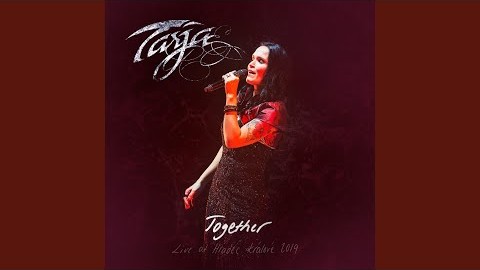
Remember Pop Idol? This predecessor to other reality talent shows yielded a few who would become stars in their own right, but, really, we watched for the countless wannabe rejects who thought they were hot stuff, only to all come undone in the brutal space of the audition room. Granted, some of these were aired purely for cruel comedy value, but the most tragic were those where you’d see some who could clearly carry a tune, did all the right things, but just lacked a spark, a presence. They’d do fine at Butlins, but not as a million-selling recording artist. That’s sort of how I feel about Kena: Bridge Of Spirits.
Incidentally, Pop Idol also ran between 2001 and 2003, around the dawn of the sixth console generation that suddenly made it possible for more lifelike graphics and emotive storytelling, from Jak And Daxter to Beyond Good And Evil, which is also where this game feels most at home.
You play as Kena, a spirit guide whose occupation is to help the deceased move over from the physical world to the spiritual afterlife. Themes about accepting death and healing past trauma that we’ve seen more games trying to engage with recently, such as last year’s wholesome Spiritfarer, although Kena’s genre of choice is a rather conventional third-person action-adventure in the vein of The Legend Of Zelda, complete with bows, bombs, and hook shots.

At the same time, it also liberally borrows styles and ideas from many games from the past decade, from Ori’s spiritual nature-is-healing aesthetic, to mapping melee attacks to the right shoulder button and trigger like in Dark Souls (and even a parry), to the white ledge markings used in just about every game last decade. What you get is an old-fashioned, even homely concoction that’s done very well, but far from “the future of gaming” you’d expect when it was revealed for PS5 last year.
This shouldn’t diminish the work from Ember Lab as an indie studio making its first game. It’s actually quite nice to be able to play something as polished as Kena without any noticeable rough edges, at least when playing on PS5 in Performance Mode. That the visuals are what stand out the most is probably not surprising given that the developer began as an animation studio for commercials.
Most of Kena’s cutscenes are however pre-rendered, the transitions noticeable by the improved cinematic lighting and the fact they run at 24 frames per second (the standard for film), which does feel like it’s shortchanged the opportunity to showcase the PS5’s raw power, but as with the rest of the game, is also similar to the PS2 era. In this case, when the big sell of amazing graphics turned out to be being able to fit more CG sequences on a DVD.

That in itself wouldn’t be a bad thing, but while these are still impressive to look at, great storyboarding and animation alone doesn’t translate into a meaningful or memorable story. While it’s striving to pluck your heartstrings, characters just aren’t very fleshed out, with voice-acting so dispassionately phoned in that I would’ve preferred the old school route of a silent protagonist and characters speaking fictional gibberish to leave it to your imagination.
There isn’t much personality to Kena herself either and despite a couple hints to her past, you never really learn enough about her as a character or how her journey brought her to the corrupted village where the game is set. More of her growth comes from transforming from spirit guide to kick-ass action hero, as her initially underwhelming staff gradually unlocks new movesets while you’re also introduced to new mechanics over time to add variety to each section of the village, which are less dungeons but follow Naughty Dog’s ‘wide-linear’ style of level design that branch out from the main central hub.
A lot more character goes towards her pint-sized companions, which despite being called the Rot, are actually quite adorable, a mix between Pikmin and the soot sprites from Studio Ghibli’s My Neighbor Totoro and Spirited Away. They’re also used in puzzles and combat, but more as extension of your abilities rather than with the strategic depth of Nintendo’s game (fortunately, any Rot you find in the world just gets added to your collection – you don’t have to worry about any perishing).

You can even dress them up in a variety of hats, which is cute but there’s a bit too much emphasis on what’s ultimately cosmetic filler, especially when you’d rather be earning Karma to upgrade Kena’s abilities. You’ll encounter treasure chests that can only be opened after completing a time-based challenge, which is deflating when after your hard effort all you get is some silly hat.
That seems a shame, because the combat is actually quite fun and even a good challenge, at least if you don’t stick to the game’s default Story Mode difficulty, which is just such a cakewalk that it renders its mechanics almost meaningless, although there’s also quite a gulf between that and the ‘medium’ Spirit Guide difficulty, where being on the receiving end of a boss’s one-two combo might leave you with just a fraction of health. Nonetheless, mastering your abilities, exploiting enemy weaknesses, and just a couple opportunities to recover your health make even the mini-boss encounters engaging, without reaching FromSoft levels of intimidating.
Still, you can’t help but wonder if mastery of combat is at odds with Kena’s goals to bring peace to tormented spirits unable to let go. There is the visual treat of seeing nature bloom once you’ve cleansed the corrupted elements, while upgrading your health is done by finding spots to sit down to meditate, but fundamentally it’s stuff you’ve seen from other more substantial games from prior decades. Kena seems content with ticking these off and executing them nicely but without offering anything new to the mix.
I’d like to think that Ember Lab will build on this for something more original and ambitious rather than just an indie mimicking the triple-A formula. Then again, as I’m reminded that the studio first caught mainstream attention with its 2016 short film A Terrible Fate, inspired by Majora’s Mask, Kena also reminds me of all those Unreal ‘remakes’ of beloved classic games you see posted online all the time. An impressive tribute act, but hardly the X factor.
Kena: Bridge Of Spirits is out now on PC, PS4, and PS5. Reviewed on PS5.
The Verdict
As a debut game, Kena: Bridge Of Spirits excels with its cinematic visuals and polished gameplay that feels like a calling card for Ember Lab to be acquired by Sony if it was to revive its colourful mascot action-adventure platformers of old. However, it’s lacking its own personality and ideas while its lacklustre story means your feelings and memories of it will quickly move into the next world the moment you’re done with it.
Pros
- Looks beautiful and feels polished in execution
- A decent variety of tools and upgradable abilities introduced throughout
- Enjoyable and challenging bosses (at least on a higher difficulty setting)
Cons
- Story’s charm and pathos is only skin deep
- Much of its gameplay feels like something you’ve played years before
- Optional challenges rarely yield interesting rewards
The post ‘Kena: Bridge Of Spirits’ review: a throwback action-adventure, and that’s just fine appeared first on NME.







